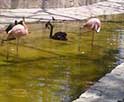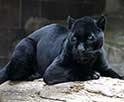Cattle Screwworm Causes: How Livestock Get Infested
Screwworm Infestation in Livestock: Symptoms and Solutions
Reading time : 1 minute,
Discovery Chepe Id-681-ECO
Published in
04-30-2025

The cattle screwworm, scientifically known as Cochliomyia hominivorax, is a parasitic insect that poses a serious threat to livestock, especially in tropical and subtropical regions. This pest causes devastating economic losses in the agricultural industry and demands immediate attention when detected.
Symptoms in Infected Animals:
Infected livestock usually show clear signs of infestation, which can include:
Open wounds: Fresh wounds attract the female screwworm fly to lay her eggs.
Foul-smelling discharge: As larvae feed on living tissue, a strong odor emerges.
Restlessness and discomfort: Animals often lick, bite, or scratch the infested area.
Weight loss and reduced productivity: Chronic infestation can lead to emaciation and decreased milk or meat production.
Treatment:
Treating screwworm infestation requires prompt veterinary care. Recommended steps include:
Manual removal of larvae: Using sterile tweezers or tools to extract the maggots.
Topical insecticides: Application of approved larvicidal products like ivermectin or organophosphates.
Wound care: Cleaning and disinfecting the wound to prevent reinfestation.
Systemic antibiotics: Sometimes necessary to avoid secondary bacterial infections.

Myiasis in Cattle (Screwworm): Identification, Treatment, and Prevention
Economic Impact:
The presence of the cattle screwworm can cause severe financial losses, especially in developing countries. According to the Food and Agriculture Organization (FAO), outbreaks have cost livestock industries hundreds of millions of dollars annually.
Reduced productivity: Affected animals yield less meat, milk, and other products.
Increased veterinary costs: Regular treatments, quarantines, and surveillance become mandatory.
Trade restrictions: Outbreaks can lead to international trade bans on animal products.
Is It Contagious to Humans?
Yes, although rare, humans can also become infested with screwworm larvae. The condition is called myiasis. In humans, it typically occurs through open wounds or mucous membranes exposed to eggs laid by the female fly. Immediate medical attention is essential to remove the larvae and prevent tissue damage.
Reproduction in Livestock:
The reproductive cycle of the screwworm begins when the adult female fly lays hundreds of eggs in open wounds on livestock. Within 12-24 hours, larvae hatch and begin feeding on the host's live tissue. The maggots bury themselves deeper into the flesh, which worsens the wound and invites more flies.
Larvae drop to the ground: After 5-7 days, mature larvae fall off the host and pupate in the soil.
Adult flies emerge: After 7-10 days, adult flies emerge and begin the cycle again.
For more information, the USDA provides resources and updates on the eradication and control of screwworm in various regions: USDA APHIS
The cattle screwworm is a serious concern for both animal and public health. Effective surveillance, early treatment, and public awareness are crucial to control its spread and minimize its economic and biological impact.
See this other article for more information:
Screwworm Treatment and Prevention.
See Also
Discovery Chepe
Most read...















